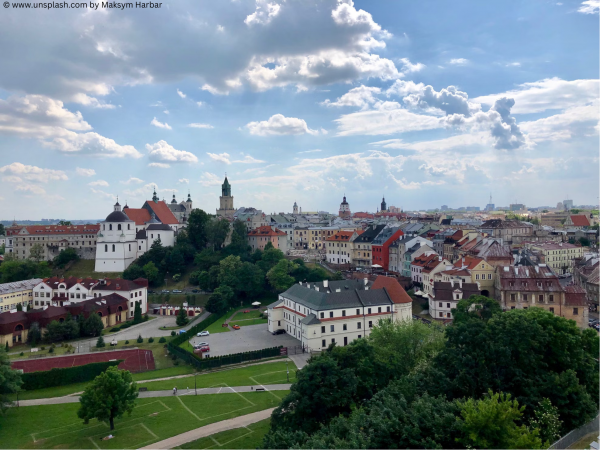
Thanks to EU funds distributed under the Regional Operational Fund of the Lubelskie region in Poland for the 2014-2020 period, the region will gain a modern transport node in the form of a metropolitan station in Lublin, connecting various means of transport: city buses, intraregional and long-distance buses, and railway. In addition, EU funds will also be used to modernise one of the region's essential railway line sections, in accordance with the idea of the 2021 European Year of Rail.
A project called "Integrated Transport Centre for the Lublin Functional Area" will be implemented under priority axis 5, "energy efficiency and low-emission economy". The project will involve constructing a bus station in the immediate vicinity of the railway station along with the accompanying infrastructure (at the moment, there is a considerable distance between these two stations). This will make it easier for passengers to change means of transport. Building the multimodal transport node will also make the railway a more attractive option and will make it more accessible to residents who do not have direct access to it. The ease of changing between buses/regional buses and trains will enable passengers to conveniently use various means of transport.
The modern facility will also be equipped with a number of environmentally friendly solutions. Installations will be fitted that will reduce the building's CO2 emissions and improve its energy efficiency. Integrating collective transport systems and applying smart passenger service solutions will considerably improve the quality of the service and thus make collective transport more competitive in relation to individual transport. The investment will also cover new greenery, including a terrace to be built on the roof of the building, where people will be able to wander. Moreover, all the facilities will be able to meet the needs of people with disabilities. The value of the investment will amount to more than EUR 65 million, of which EUR 40 million will be financed by the EU.
This is a historic moment. After many years of hard work, Lublin will have a station fit for the 21st century. It is an extremely important strategic investment for the region, as well as being one of its biggest, and is being co-financed by EU funds. We will build a functional public transport node for the whole region, connecting the city of Lublin's internal transport with regional and long-distance transport. I firmly believe that this investment will be a model example of a modern transport solution for other cities in Poland and Europe as a whole.
Another project, "Revitalisation of railway line no 30 on the Lubartów-Parczew section" (priority axis 8, "regional mobility and green transport") will also receive considerable financial support from the EU. The idea behind the project is to improve the efficiency of railway transport in the region. Applying new technological solutions together with adapting the infrastructure so that it can handle passengers with disabilities will help increase travellers' comfort and safety. Improving railway lines' technical conditions will eliminate numerous limitations and barriers, as a result of which it will be possible to increase the maximum speed of passenger trains to 120 km/h and freight trains to 80 km/h on this section. It is estimated that the investment will help to improve service provision for more than 350 journeys within a year. Additionally, safety on 13 level crossings will be improved and passengers will benefit from 10 modernised train stations.
Developing railways at regional level is in keeping with the idea of the 2021 European Year of Rail. It helps to promote rail travel as a means of transport that is comfortable for passengers and sustainable for the environment. According to EU Cohesion Policy, modernising collective transport and combating communication exclusion indirectly translate into economy growth for the region in question and diminishing development gaps.

